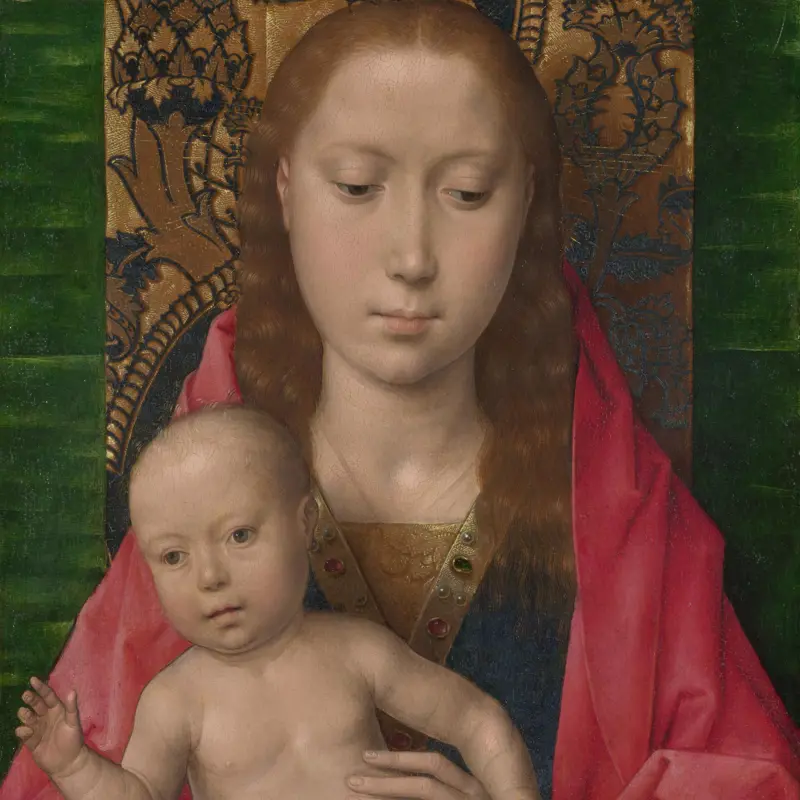Hans Memling, 'Two Panels from a Triptych', about 1480
About the group
Overview
These panels were once the wings of a small triptych (a painting in three parts), the centre panel of which – The Virgin and Child with Two Angels – is now in the Uffizi, Florence. The altarpiece was demonstrably in Florence by the end of the fifteenth century, as its landscape backgrounds were frequently copied by Florentine artists of the time.
This composition, with the Virgin and Child enthroned and flanked by standing saints, was a popular product of Hans Memling’s workshop. The Virgin, Christ and angels in the Uffizi painting reappear in several other works by him, including The Donne Triptych (also in the National Gallery’s collection).
On the outside of the wings nine beautifully painted cranes stand in a dark landscape beneath the coat of arms and emblems of the Pagagnotti family. The triptych’s first owner was almost certainly the high-ranking bishop Benedetto Pagagnotti, who used the crane and compasses as his emblem.
Key facts
Details
- Full title
- Two Panels from a Triptych
- Artist
- Hans Memling
- Artist dates
- Active 1465, died 1494
- Date made
- About 1480
- Medium and support
- Oil on wood
- Acquisition credit
- Bought, 1865
- Inventory number
- NG747
- Collection
- Main Collection
About this record
If you know more about this work or have spotted an error, please contact us. Please note that exhibition histories are listed from 2009 onwards. Bibliographies may not be complete; more comprehensive information is available in the National Gallery Library.
Works in the group
-
Saint John the Baptist, dressed in a hair shirt and a purple mantle, holds his attribute of a lamb. This refined painting was originally the left wing of a small triptych (an image made up of three parts). The central panel, which shows the Virgin and Child, is now in the Uffizi, Florence while t...
-
Saint Lawrence is dressed as a deacon and holds a book and the grill on which he was martyred. This panel was part of a small triptych (a painting in three parts) made around 1480 for Benedetto Pagagnotti of Florence. The central panel shows the Virgin and Child and is now in the Uffizi, Florence...









